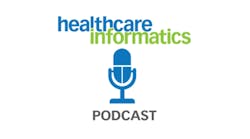Because they had already expressed concern about the meaningful use matrix outlined last summer, the immediate negative reaction of some large provider organizations such as the American Hospital Association to the interim final rules published Dec. 30 was not surprising.
A statement from the AHA noted that the rules “create a stringent definition of ‘meaningful use’ that … would unfairly penalize many hospitals.”
AHA also believes the eligibility requirements for incentives are too restrictive, excluding doctors who practice in outpatient centers and clinics owned by a hospital. The College of Healthcare Information Management Executives echoed this complaint about hospital-based physicians being barred from receiving incentive payments.
Among other things, the Medical Group Management Association bemoaned the requirement that physician offices provide patients and others with electronic copies of medical records.
I have written before about how different rules apply to critical access hospitals, which are small, rural acute-care hospitals. One of the best sources of information on this topic I have found is a blog called Rural Health IT published by the Wisconsin Office of Rural Health (www.worh.org/hit/).
Louis Wenzlow, director of health information technology and CIO of the Rural Wisconsin Health Cooperative, wrote on Jan. 6 that most small and rural providers would find meeting Stage 1 meaningful use requirements by the end of 2012 unachievable.
He noted that the CMS decision to allow providers to meet Stage 1 requirements by 2014 (if 2014 is their first payment year) is critically important. But he added that many providers who meet Stage 1 requirements in later years would likely find meeting Stage 2 and 3 requirements unachievable within the time frames allowed. “These providers will therefore receive reduced incentives and eventually be subjected to penalties,” Wenzlow added.
Will CMS really follow through and penalize these small, rural hospitals? Wenzlow finished his blog post with this analogy: “This is like starting a 40-yard dash with some runners at the starting line, others at the twenty, and still others standing past the finish line, and only those that finish in 4 seconds get a prize.”
It will be interesting to see how much impact these public comments have on the final shape of the CMS rules. We’ll know in a few months.

